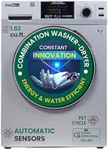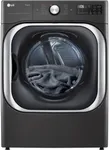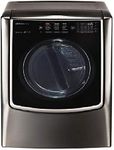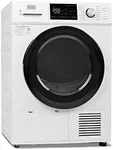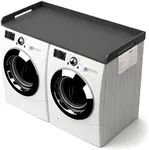Buying Guide for the Best Ventless Dryers
Choosing the right ventless dryer can make a significant difference in your laundry routine. Ventless dryers are a great option for those who don't have the ability to install a traditional vented dryer. They are more energy-efficient and can be installed in a variety of locations. To make the best choice, you need to consider several key specifications that will determine how well the dryer meets your needs. Here are the most important specs to consider and how to navigate them.CapacityCapacity refers to the amount of laundry the dryer can handle in one cycle, usually measured in cubic feet. This is important because it determines how much laundry you can dry at once. Smaller capacities (3-4 cubic feet) are suitable for individuals or couples, while larger capacities (5-7 cubic feet) are better for families. Consider your laundry habits and household size when choosing the right capacity.
Drying TechnologyVentless dryers use either condensation or heat pump technology. Condensation dryers use a heat exchanger to cool the air and condense the moisture, while heat pump dryers recycle the hot air, making them more energy-efficient. Condensation dryers are generally less expensive but may take longer to dry clothes. Heat pump dryers are more efficient and gentler on clothes but come at a higher price. Choose based on your priorities: cost and drying time versus energy efficiency and fabric care.
Energy EfficiencyEnergy efficiency is measured by the dryer's energy consumption, often indicated by an Energy Star rating. This is important because it affects your electricity bill and environmental impact. Higher efficiency models use less energy, saving you money in the long run. Look for dryers with an Energy Star rating or check the energy consumption in kilowatt-hours (kWh). If you are environmentally conscious or want to save on utility bills, opt for a more energy-efficient model.
Drying Programs and FeaturesDrying programs and features refer to the different settings and options available on the dryer, such as delicate, heavy-duty, quick dry, and wrinkle prevention. These are important because they provide flexibility and convenience, allowing you to customize the drying process for different types of fabrics and laundry loads. More programs and features can be beneficial if you have a variety of clothing types and want to ensure optimal care for each. Consider your typical laundry needs and look for a dryer with programs that match them.
Noise LevelNoise level is the amount of sound the dryer produces during operation, usually measured in decibels (dB). This is important if the dryer will be placed in a living area or near bedrooms, as a quieter dryer will be less disruptive. Lower decibel levels indicate quieter operation. If noise is a concern, look for models that specify a low noise level or have features designed to reduce noise.
Size and InstallationSize and installation refer to the physical dimensions of the dryer and the ease of setting it up in your home. This is important because it determines whether the dryer will fit in your designated space and how easy it will be to install. Measure the space where you plan to place the dryer and compare it to the dryer's dimensions. Also, consider the type of plug and electrical requirements. Choose a dryer that fits your space and can be easily installed without requiring major modifications.


